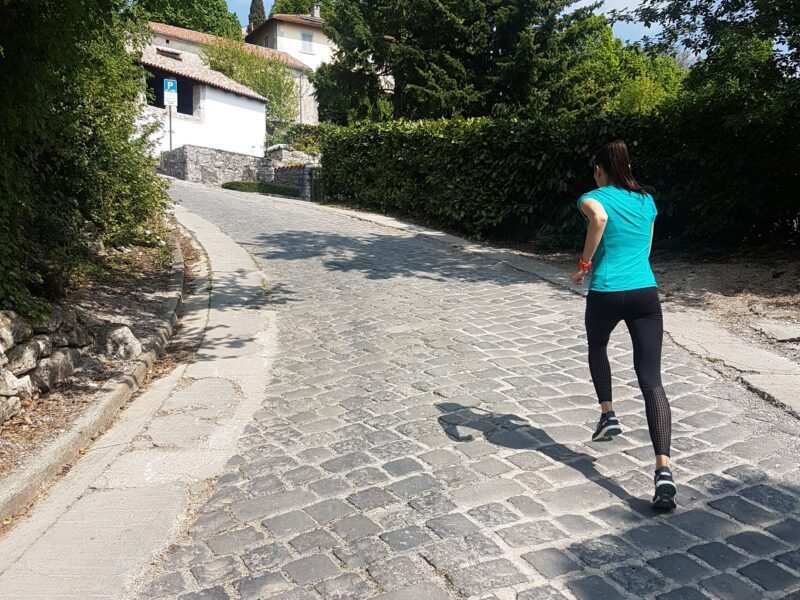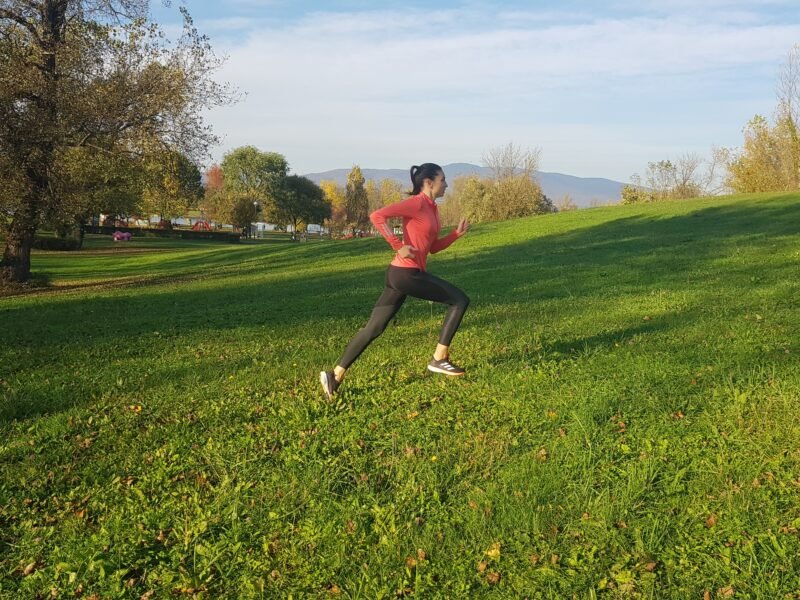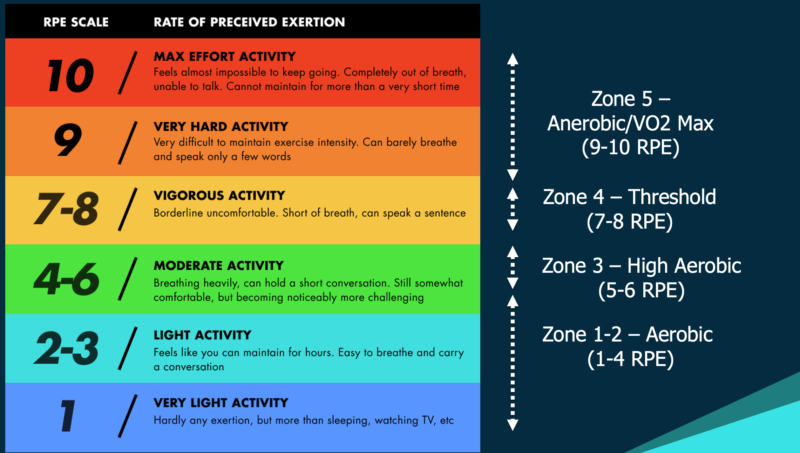Long Hill Run (6 Benefits & 7 Answered Questions in Detail)
One type of hill running workout is the climb, also known as the long hill run.
If you haven’t already, it’s time to include it into your training plan and become a better and more efficient runner.
In this article, you will find out all about the long hill run.
What is the long hill run?
The long hill run is a type of hill training that includes continuous uphill running, without stopping. It is a specific type of strength workout for runners and serves to improve endurance, fatigue resistance, and neuromuscular coordination.
It is a great workout for all runners, especially those who are preparing for hill running races, half marathons, or marathons.
Below I will answer some of the most often asked questions about the long hill run.

What are long hill run benefits?
Due to its many benefits, long hill runs make you a better runner and are a great workout regardless of whether you’re preparing for races on flat or hilly terrain.
1. It increases strength
When you run uphill, you have to overcome gravity along with the resistance of your weight.
That means that you have to activate your muscles more strongly, which then leads to their strengthening and overall improvement of strength.
2. It improves endurance
Whether you are preparing for a race that includes hill running, long hill runs will improve your aerobic performance and make it a lot easier for you to run on flat ground.
3. It improves your running form
Hill running forces you to run with a proper running technique.
Your body is slightly bent forward, you naturally raise your knees higher, you work more intensely with your arms, and you do not run on your heels but on the balls of your feet.
4. It improves your running economy
When doing long hill runs, you can spend less energy while maintaining the pace that you have when you run on flat ground.
5. It improves neuromuscular coordination
During long hill runs, you naturally coordinate your arm and leg movements to maintain balance.
The more intensely and quickly you work with your arms, the faster your legs will move as well.
This results in improved communication between your muscles and nerves, making you a faster and more efficient runner.
6. It makes you a mentally stronger runner
The long hill run is quite difficult, so your self-confidence and fatigue resistance improve as you overcome the long hill ahead of you.
This will also make your running on the flat ground feel a lot easier.
Read more: 14 Amazing Hill Running Benefits for Runners
Who can do long hill runs?
The long hill run workout is recommended for most runners, especially those who are preparing for a hill running race, half marathon, or marathon.
Long hill runs are not recommended for beginners.
When starting to run, beginners should walk uphill or do shorter hill repeats on a gentle slope.
That way, they will additionally activate their muscles and adjust their body to the exertion posed by hills.
Over time, as your fitness level increases, you will become ready for long hill runs.
Read more: Why is Hill Running so Hard? (10 Ways to Make it Easier)

How to warm up before long hill runs?
Before each workout, including the long hill run, it is important to properly warm up and prepare your body for exertion.
Read more: 7 Reasons Why You Need to Warm-Up Before Running
Warm-up before the long hill run includes:
- Easy running on flat ground
- Mobility exercises and dynamic stretching exercises
- Strides on flat ground
Tip
Adjust the warm-up length to your current fitness level and weather conditions.
If you do not have a lot of time available, at least do mobility and dynamic stretching exercises and start running more easily.
Read more: Warm-up Routine Before Running (Training/Race)
How to properly do long hill runs?
In order to beat the slope more easily, follow the following tips.
- Keep your body upright, slightly bending forward at the hips.
- Look straight ahead and not at your feet.
- Adjust your stride length to the slope. The steeper the hill is, the shorter your stride needs to be.
- Work with your arms more intensely.
- If there is a steep slope in front of you, begin to walk. That way, you will maintain your speed and conserve energy.
Tip
Even professional runners walk across certain steeper parts of a track. Use the technique of walking with long, energetic steps in which you push your knees with your hands. That way, your whole body participates in the movement and you achieve a much higher speed than when walking upright.
At what pace should you do long hill runs?
The pace and intensity of the long hill run depend on the length of training, hill gradient, and your current fitness level.
The best way to determine the intensity and effort with which you will run long hill runs is by running by feel, without worrying about a precise pre-set pace.
According to the rate of perceived effort scale (RPE scale), the level of effort is set around 6-7.
That means if the workout is hard, you will breathe harder, but you will still be able to hold a short conversation.
The emphasis is put on increasing endurance and fatigue resistance.

Running by feel is the most demanding method of determining the intensity of training because subjective feeling can easily fool you.
Therefore, be careful when you run by feel, and listen to your body. Remember, instead of faster, it is better to run slower relative to the expected effort.
Tip
You will not do a better workout by running too fast. It is more likely that you will finish the workout earlier and reduce the amount of hill running, while also increasing the time needed for recovery and the likelihood of injury.

What are long hill run precautions?
The long hill run demands additional preparation and logistics, so the following is important:
1. Pick suitable terrain
There are different kinds of terrain where you can do long hill runs, from roads to forest tracks or macadam.
Naturally, the area in which you live will influence the choice of terrain.
If you have a choice, at first, choose a terrain that is not too uneven to avoid the risk of tripping.
2. Pick an adequate slope
Keep in mind that steeper hills require more strength.
At first, pick gentler hills, and do not overestimate your capabilities.
Over time, as your body adapts to long hill runs, pick steeper hills. That way, you will avoid overtraining and the risk of injury.
3. Check the weather forecast
Every trip to the mountains requires consideration and caution.
Before each workout, make sure that you check the weather forecast to avoid bad weather conditions that will render you unable to do the workout adequately.
4. Pay attention to the time of day
The long hill run, as the name suggests, takes a long time to do.
Due to that, it is important to plan the start time of the workout in order to successfully finish it before dark.
5. Prepare your running equipment
If you run on uneven terrain, invest money into trail running shoes with specially designed soles for that type of terrain.
On longer hill runs, use a running backpack, especially if your partner will not meet you at the top.
In your backpack, bring some refreshments and a dry T-shirt for changing, especially if you plan to walk back.
In addition, be sure to bring a cell phone so you can call for help in case of an emergency.
Tip
Always take a running gel or dextrose candy in case you run out of energy and your blood sugar drops.
6. Be careful when running downhill
You have come to the top and now you have to go back down. Running improperly or too fast downhill often leads to injuries.
The main reason for this is that the returning force of the ground is increased when you are running downhill.
If it is possible, the best option would be if someone greeted you at the top and drove you down.
If you do not have that option, run downhill at a lower intensity and pay attention to the running technique, or simply return to walking.
However, running downhill can also be very helpful if performed properly and occasionally.
It is extremely important if you are going to have downhill sections in your race.
In that case, do not avoid them during training so that your body adapts to the increased stress on your body that is present when you run downhill.
If you want to know more about hill training, read the article Hill Training (8 Best Hill Running Workouts).

Matea Matošević
Hi, I’m Matea! I’m an Olympic Marathon Runner, founder, and writer behind OLYRUN.com. On this site, I provide help in the form of my knowledge and experience to all who love running and active living. Read more…

